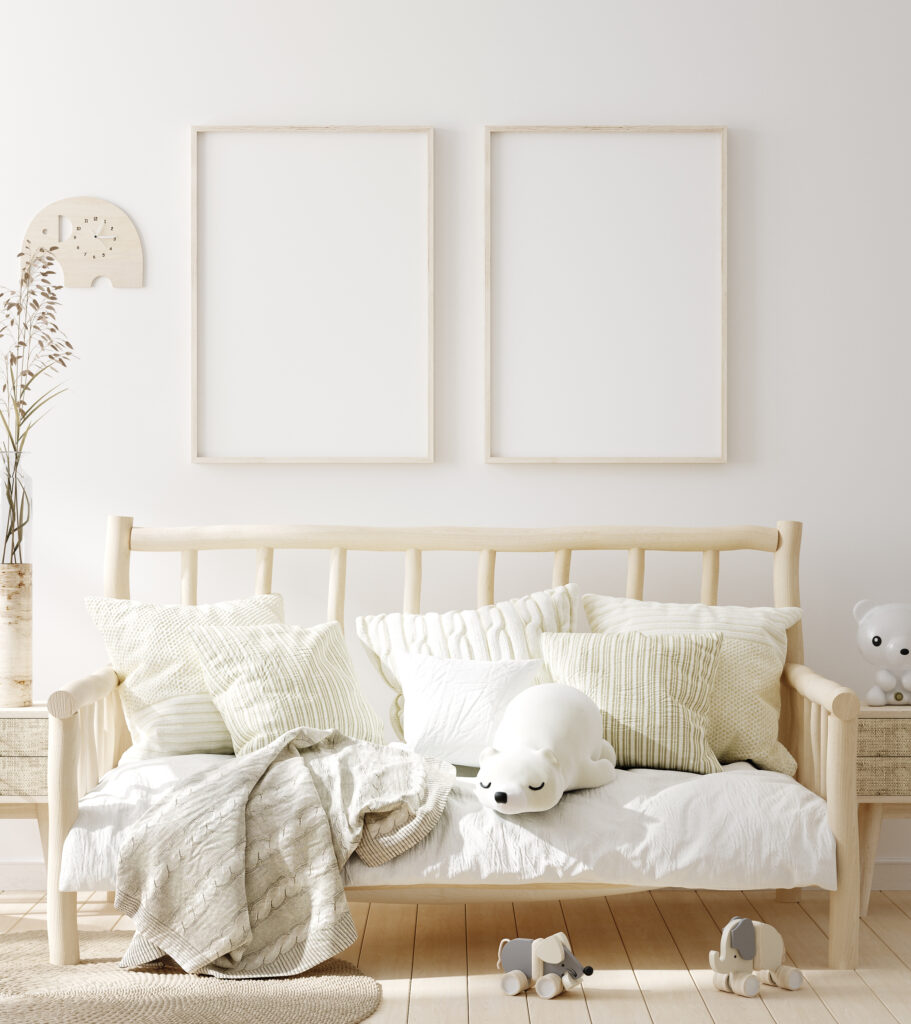
When it comes to ensuring a baby gets a good night’s sleep, many factors may seem beyond our control. However, one aspect we can influence is the sleep environment. Crafting an optimal sleep environment can significantly impact a baby’s sleep quality, fostering better rest and overall well-being. In this guide, we’ll delve into the key elements of a conducive sleep environment for babies.
Creating a pitch-black environment at night is ideal for supporting a baby’s natural melatonin production and signaling that it’s time to sleep. Investing in blackout blinds or using dark sheets over windows (especially in the summer months when the sun has not set at bedtime) can help maintain darkness, promoting better sleep cues. Even while traveling, bringing along a dark sheet can ensure consistent sleep conditions for your baby. Additionally, dimming lights throughout the house during the evening hours can further reinforce the bedtime routine. Consider using red light bulbs for minimal disruption during nighttime care activities like feeding or diaper changes.
The debate surrounding white noise continues, but many parents find it beneficial for masking background noises and promoting uninterrupted sleep for their babies. White noise machines or fans can drown out sudden sounds that might otherwise disrupt sleep and this is especially useful for highly sensitive babies. However, it’s essential to keep the noise level moderate, around 50 decibels, to avoid overstimulation. Pay attention to your baby’s response to determine whether white noise is soothing or distracting for them.
While conventional wisdom suggests cooler room temperatures for optimal sleep, it’s essential to consider cultural variations and individual preferences. Dress your baby appropriately for the ambient temperature, prioritizing breathable fabrics to prevent overheating. Monitor signs of discomfort, such as sweating or restlessness, to gauge whether your baby is too warm or too cold. Remember, it’s safer for a baby to be slightly cooler than too warm during sleep.
Adhering to safe sleep guidelines is paramount for reducing the risk of suffocation and ensuring your baby’s safety during sleep. Key recommendations include maintaining a smoke-free environment and keeping the sleep surface free from hazards like toys and loose bedding. Educate caregivers about safe sleep practices and avoid using sleep positioners or allowing babies to sleep in devices like car seats or swings unsupervised. It is important to note that devices such as the DocATot are NOT MEANT FOR SLEEP and are not a safe place for a baby to sleep unattended.
When it comes to crib safety, placement matters. Position the crib away from windows to minimize drafts and external noise disturbances. Remove distractions like mobiles and toys during sleep times to prevent accidents. Recognize that resistance to sleeping in the crib may stem from separation anxiety rather than discomfort with the crib itself. Consider strategies for gently transitioning from co-sleeping to independent crib sleep while prioritizing attachment and emotional security.
Creating an optimal sleep environment for your baby involves careful consideration of factors like light, noise, temperature, and safety practices. By prioritizing your baby’s comfort and well-being, you can foster healthy sleep habits and support their overall development. Remember, every baby is unique, so be attuned to your child’s cues and preferences as you refine their sleep environment. With patience and consistency, you can create a soothing sanctuary where your baby can rest peacefully.
Another post to follow on safe bedsharing …
Copyright © 2021 – IslaGrace. All Rights Reserved
